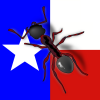My first (and so far only) queen I'm pretty sure is a Pheidole bicarinata. I found her on a sidewalk alongside a sandy vacant lot on the slope of a hill. In researching what species she might be I remember that www.antwiki.org has info like habitat. For example, the habitat entry for Pheidole bicarinata says, "This species has a preference for open sites with sandy soils and habitats that are at the moister end of dry (e.g., grasslands and valley bottoms in arid areas), at least in the west. It also inhabitats sites that have some but not all of these characteristics. Gregg (1963) stated Pheidole bicarinata in Colorado was a Sonoran Zone species. In the eastern US (Carter, 1962; Wilson 2003) this ant is common in fields and open grassy locations, including in ruderal sites (sidewalks, lawns, and along the shoulder of roads)." Those entries might help you narrow it down. May the odds be ever in your favor.
Edit: I forgot also that www.antweb.org has very detailed info compiled of where species have been found. For example, here is the Pheidole bicarinata entry for habitat:
Found most commonly in these habitats: 10 times found in foredunes, 3 times found in cottonwood dunes, 5 times found in desert, 2 times found in scotch pine dunes, 3 times found in desert grassland, 2 times found in deciduous woodland, 2 times found in Jack pine dunes, 2 times found in black oak dunes, 2 times found in desert scrub, 2 times found in salt desert scrub, ...
Found most commonly in these microhabitats: 12 times under stone, 6 times nest under stone, 4 times nest in soil, 2 times in soil, 2 times nocturnal foragers, 1 times in dead wood and soil, 1 times ex spider middens under adjacent stones, 2 times ex sifted leaf litter, 1 times strays, 1 times nests under rocks, 1 times nests and foragers on soil, ...
Collected most commonly using these methods: 28 times search, 8 times under rock, 4 times log stage 2, 2 times bait, 0 times direct collection, 3 times hand collecting, 1 times under stick, 1 times log stage 4, 1 times log stage 5, 1 times under wood, sparse grass, 1 times on sand, ...
Edited by EllisWyatt, December 31 2017 - 5:41 PM.

























